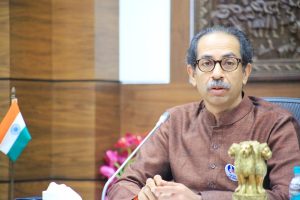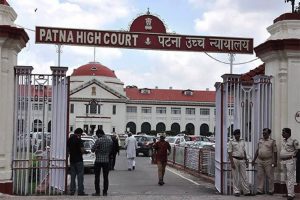Shiromani Akali Dal, one of India’s oldest parties, celebrated its 100th birthday on December 14 on a low-key note. The SAD has gone through many ups and downs during its existence. It is currently trying to win Punjab in the upcoming Assembly poll. The Akali Dal has ruled Punjab longer than any other political party since helping to create the Punjabi-speaking state in 1966, achieving its goal of a separate territory for Punjabi-speaking people. It is the only religion-based political party in India.
From the mid-1920s, the SAD was a part of the Indian independence movement and civil disobedience. The SAD has also controlled Sikh religious institutions such as the Shiromani Gurdwara Prabandhak Committee (SGPC) and, more recently, the Delhi Sikh Gurdwara Management Committee. Liked the other two state-based parties – the National Conference (1939) and the DMK (1949) – the Akali Dal sees itself as the custodian of the social, cultural and political interests of the Sikh community in India and overseas.
Advertisement
SAD has played a pivotal role in shaping Punjab’s politics in the post-independence era. It had also ruled the country as part of the NDA coalition only to sever its connection last year to support the farmers’ agitation. Parkash Singh Badal, the party’s patriarch, too, has the distinction of serving the state with five terms as the chief minister (1970-71, 1977-80, 1997-2002, 2007-12 and 2012-17).
In 1967, in the first legislative assembly elections for the newly carved out Punjab state, the SAD formed government cobbling together a broad coalition of nonCongress parties. But this government fell within months. In the 1969 polls, the SAD again formed a shortlived coalition government with the Bharatiya Jana Sangh because the Centre dissolved the Assembly in 1971.
The regional party lost the 1972 elections but came back to power in 1977 with Badal as chief minister. SAD lost to Congress in the 1980 state assembly elections in the rollercoaster politics of the state. In 1985, the party formed a government, but the Centre imposed President’s rule after two and half years. Badal became the chief minister again in 1997. The SAD lost the polls in 2002 but won in 2007 with the BJP as a junior partner. This alliance ruled until 2012. Badal stepped down in 2008, and his son Sukhbir became the chief minister. Congress won in 2017.
Badal was out of action and in jail at various times, including the 1975-77 emergency. He also had a stint in Lok Sabha in early 1977. Historically, the emergence of regional parties has transformed electoral politics in India. SAD’s existence for a hundred years focuses on how small regional parties coexist with national parties like the Congress and the BJP. Many newer regional satraps like Mamata Banerjee of West Bengal, Nitish Kumar of Bihar, and Naveen Patnaik of Odisha have proved that good economics can also make good politics.
The Dravida Munnetra Kazhagam and its offspring AIADMK have been powerful regional parties alternating in power in Tamil Nadu since 1967. The 1980s saw the emergence of many small political parties, including Telugu Desam. The Nationalist Congress Party, Trinamool Congress, PDP and YSRCP led by Jagan Mohan Reddy are all the offspring of the Congress. Most of them have come to power ousting the national parties. UP has the Samajwadi Party and the Bahujan Samaj Party, which had alternated in power since 1989 and yielded to the BJP only in 2017.
Mamata Banerjee threw out the CPIM, which ruled the state for 33 years, in 2011, and since then, she has been in power. Maharashtra’s Shiv Sena and NCP have been in power for two decades. There are many more such examples, but one thing in common is the emergence of charismatic leaders to head these regional parties. They include Bal Thackeray, Sharad Pawar, Mamata Banerjee, C M Annadurai, M Karunanidhi, M.G. Ramachandran, N.T. Rama Rao. Jayalalitha, Naveen Patnaik, Jagan Mohan Reddy, Dr. Farooq Abdullah, Mehboobha Mufti and Arvind Kejriwal, to name a few. Some of them have also become coalition partners in the NDA and UPA and ruled the country.
Secondly, the regional satraps have found a new acceptable narrative to remain in power. Thirdly, Congress lost sheen and yielded place to many regional satraps. The BJP’s rise is only from 1998. The regional satraps have been able to satisfy the aspirations of the people of their region. The moral of the story is that the national parties have lost some of their space to regional outfits. These parties also believe in personality cults and coexist with the national parties in a democracy. This paradox is peculiar to Indian democracy.











